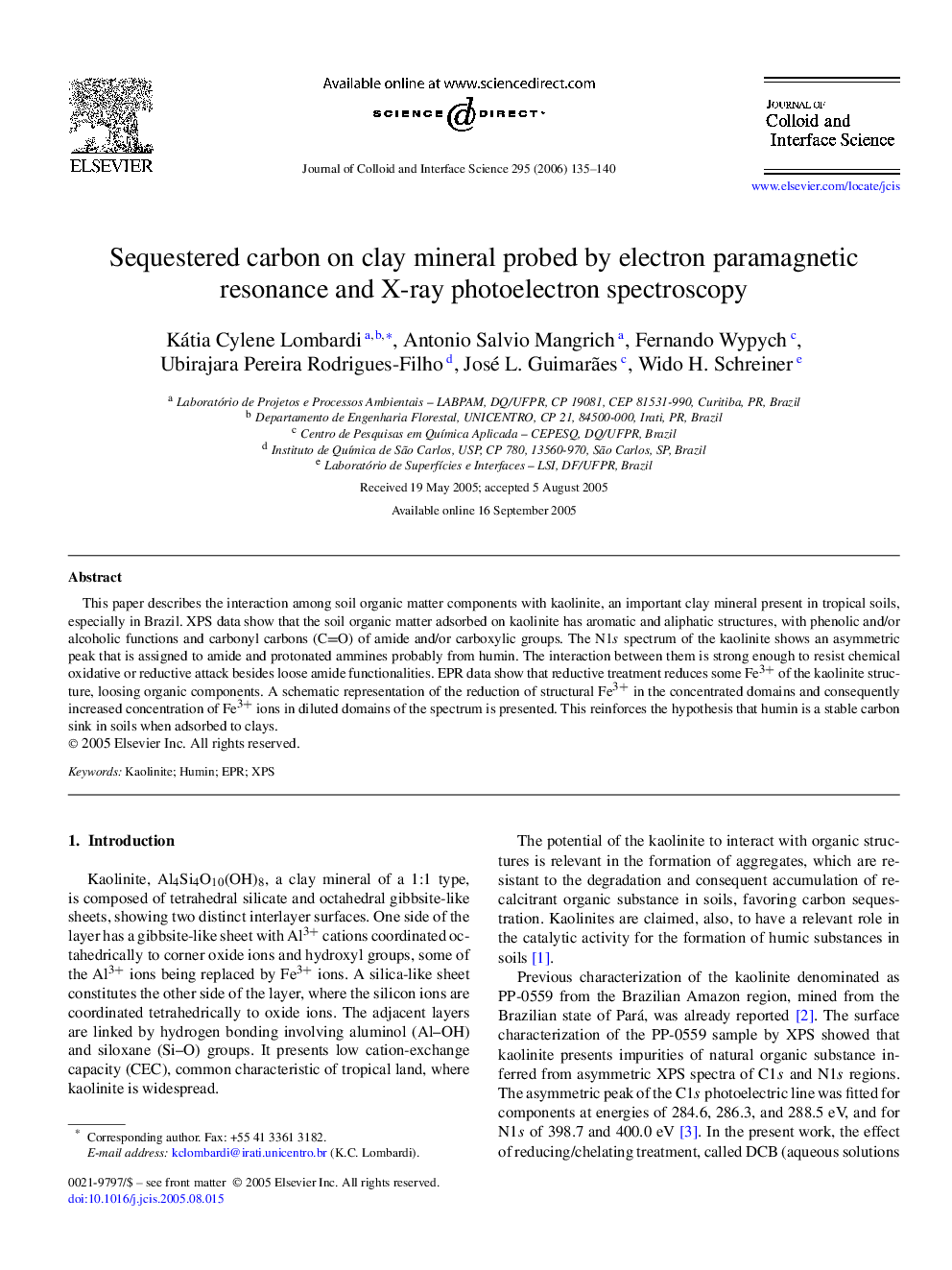| کد مقاله | کد نشریه | سال انتشار | مقاله انگلیسی | نسخه تمام متن |
|---|---|---|---|---|
| 613866 | 880731 | 2006 | 6 صفحه PDF | دانلود رایگان |

This paper describes the interaction among soil organic matter components with kaolinite, an important clay mineral present in tropical soils, especially in Brazil. XPS data show that the soil organic matter adsorbed on kaolinite has aromatic and aliphatic structures, with phenolic and/or alcoholic functions and carbonyl carbons (CO) of amide and/or carboxylic groups. The N1s spectrum of the kaolinite shows an asymmetric peak that is assigned to amide and protonated ammines probably from humin. The interaction between them is strong enough to resist chemical oxidative or reductive attack besides loose amide functionalities. EPR data show that reductive treatment reduces some Fe3+ of the kaolinite structure, loosing organic components. A schematic representation of the reduction of structural Fe3+ in the concentrated domains and consequently increased concentration of Fe3+ ions in diluted domains of the spectrum is presented. This reinforces the hypothesis that humin is a stable carbon sink in soils when adsorbed to clays.
This paper describes the interaction among soil organic matter components with kaolinite, an important clay mineral present in tropical soils, especially in Brazil. XPS data show that the soil organic matter adsorbed on kaolinite has aromatic and aliphatic structures, with phenolic and/or alcoholic functions and carbonyl carbons (CO) of amide and/or carboxylic groups. The N1s spectrum of the kaolinite shows an asymmetric peak that is assigned to amide and protonated ammines probably from humin. The interaction between them is strong enough to resist chemical oxidative or reductive attack besides loose amide functionalities. EPR data show that reductive treatment reduces some Fe3+ of the kaolinite structure, loosing organic components. A schematic representation of the reduction of structural Fe3+ in the concentrated domains and consequently increased concentration of Fe3+ ions in diluted domains of the spectrum is presented. This reinforces the hypothesis that humin is a stable carbon sink in soils when adsorbed to clays.
Journal: Journal of Colloid and Interface Science - Volume 295, Issue 1, 1 March 2006, Pages 135–140